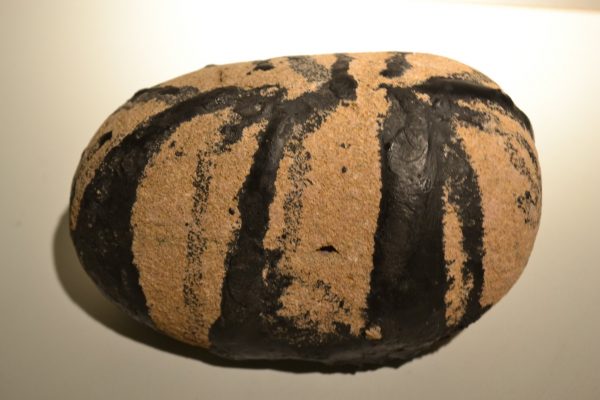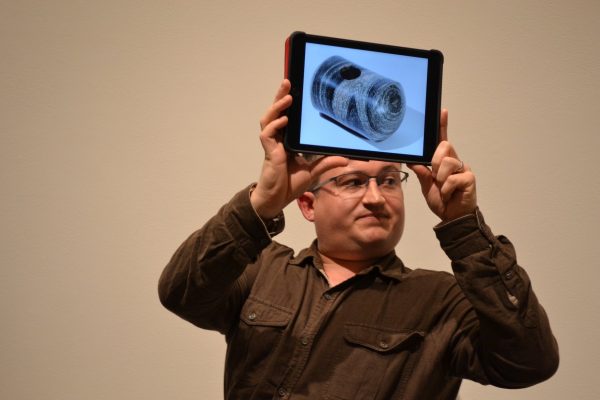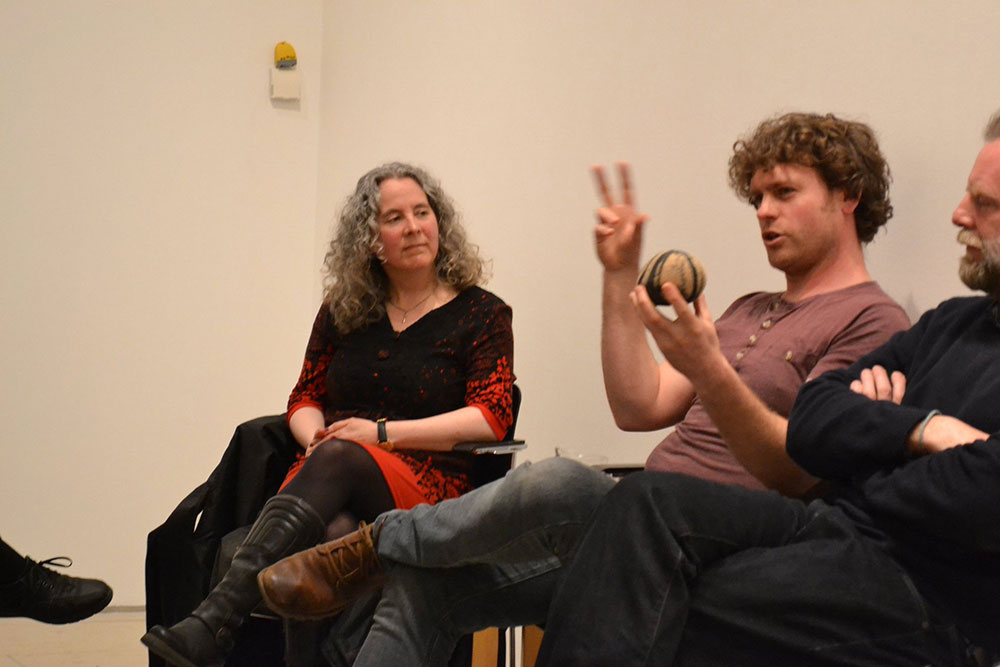Stories about Archaeology
While we previously had a blog post titled ‘Story Time’, this post focuses on the importance of stories about Deep Time research. For example, my colleagues generally enjoy sharing amusing (and sometimes harrowing) tales about archaeology and these can be an effective medium for sharing important ideas and information.
To explore this further, the Deep Time Festival included a public storytelling session about archaeology. Six individuals who reside in Orkney with backgrounds in archaeology and public heritage served as storytellers. Each story shared was recorded and can be listened to below. Fran Flett Hollinrake (Historian, Writer, Storyteller, Tourist Guide, and Custodian for the St. Magnus Cathedral) served as a wonderful curator for the evening and can be heard at various points throughout each recording.
Caroline Wickham-Jones (Honorary Research Assistant, University of Aberdeen) shared a story about her research on the Mesolithic site at Kinloch on Rum in the 1980s. She reflects on lessons learned from the research and how these experiences have shaped aspects of her archaeological career.
Story_1_-Caroline-Wickham-Jones.mp3
Hugo Anderson-Whymark (Visiting Scholar, University of the Highlands and Islands) told the tale of a Late Neolithic macehead from Orkney; from its non-Orcadian geological origins, its documentation in the historical record in AD 1838, and its more recent history of being a focus of his own archaeological research.
Story_2_-Hugo-Anderson-Whymark.mp3
Dan Lee (Lifelong Learning and Outreach Archaeologist, University of the Highlands and Islands) discussed the different ways he can answer a question he is asked more than any other: “What’s the best thing you’ve ever found?’
Andrew Hollinrake (Archaeologist, Military Historian, and Tourist Guide, Kirkdale Archaeology) described some of his own archaeological work over the years, focusing on the excavations at Melrose Abbey and the transportation of a lead container believed to contain King Robert the Bruce’s heart. This story also contained a mini-tale involving the Stone of Destiny.
Story_4_-Andrew-Hollinrake.mp3
Fran Flett Hollinrake provided a short follow-up story about her own encounter with the transportation of the Stone of Destiny.
Tom Muir (Exhibitions Officer for the Orkney Islands Council) described an old folktale about how an individual became stuck in a fairy mound at Howe for a year, thinking it was only a few seconds. This tale is intertwined with some of his experiences with archaeological fieldwork.
Together, the event demonstrates that complex multidisciplinary interpretations of archaeological histories can be effectively presented in the format of a story, corresponding nicely with the inherently multidisciplinary Orkney: ‘Beside the Ocean of Time’ project. For example, the geological origins of stone artefacts were discussed in several of the stories (Figures 1–2), like how the presence of Rum bloodstone lithics at an archaeological site served as an important point in the tale by Caroline Wickham-Jones.

Figure 1. Part of Dan Lee’s story involved a discussion of how a Devonian sandstone covered in Jurassic bitumen (shown above) revealed information about 20th century AD Rackwick fishermen.

Figure 2. The Neolithic macehead at the centre of Hugo Anderson-Whymark’s tale is crafted from Lewisian gneiss, the oldest rock in Britain, found in northwest Scotland and the Outer Hebrides. In this figure, Hugo is showing an image of the macehead to the audience.
While the focus of the event was archaeology, many of the stories included discussion relevant to other fields in Deep Time research. Caroline Wickham-Jones’ story included cross-disciplinary reflections about observer bias and the power of prejudice. The field of folklore played an important part of Tom Muir’s story, which included a narrative from an Orcadian folktale. Likewise, the stories shared by Andrew Hollinrake and Fran Flett Hollinrake involved encounters with objects of historical significance for Scotland.
Overall, this event ended up being one of the best attended activities at the Deep Time Festival and audience members appeared to be engaged the entire time. As is evident in the audio recordings, there was quite a lively atmosphere. Audience participation was a component of the event with Q&As and discussions. During a break for refreshments, artefacts were shown at different tables by Caroline Wickham-Jones, Dan Lee, and Christopher Gee (Project Officer, Orkney Research Centre for Archaeology, University of the Highlands and Islands).
I was partially inspired to set this activity up after I learned of a StoryCorps at the 2016 Southeastern Archaeological Conference. Feel free to send me an email (Tony.Krus@glasgow.ac.uk) if you know of any similar types of public activities about sharing tales of research.
Acknowledgements
I would like to thank Fran Flett Hollinrake for curating the storytelling evening and all the participants for sharing their stories (Caroline Wickham-Jones, Hugo Anderson-Whymark, Dan Lee, Andrew Hollinrake, Tom Muir, and Christopher Gee). I would also like to thank Mark Krus for his help with remastering the recorded audio files and Prof Jane Downes (Director of the UHI Archaeology Institute) for her help with organising everything.
